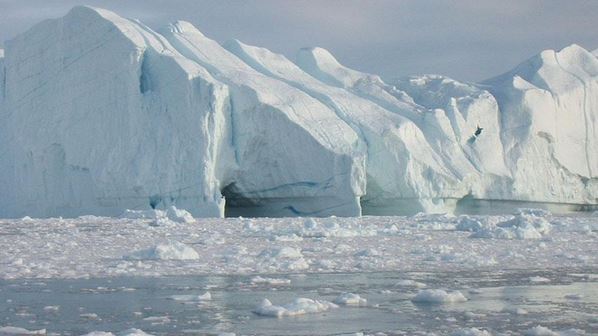The last ice age ended mainly because of a release of CO2 stored deep in the ocean, which helped warm the planet, say Australian and British researchers. They believe their study will help scientists better understand how the ocean affects climate change and the carbon cycle.
Dr Gianluca Marino, who works at The Australian National University (ANU) Research School of Earth Sciences, said:
“The ocean currently contains about 60 times more carbon than the atmosphere – in natural conditions it is the main driver of carbon dioxide variations. Carbon can exchange rapidly between the ocean and the atmosphere.”

Carbon stored deep in Antarctic waters ended the last ice age. (Image: Australian National University)
The study has been published in the journal Nature (citation below).
Levels of CO2 (carbon dioxide) in the atmosphere have fluctuated from about 185 parts per million (ppm) during the last ice age, to 280 ppm during the warmer periods of the last thousand years. Since 1850, CO2 levels have climbed to almost 400 ppm.
Once, more than 50 million cubic kilometers of ice covered Scandinavia and North America. It melted away about 19,000 and 10,000 years ago. Enough water was released during this period to raise the sea level by about 130 meters.
In this study, the scientists reconstructed ancient CO2 levels by studying levels of boron, an element found in the shells of microfossils recovered from the ocean floor, and compared them with levels of CO2 previously registered in Antarctica ice cores.
The researchers found that at the end of the last ice age, reconstructions of CO2 dissolved in the ocean from miniscule organisms that lived at the surface in the Eastern Equatorial Pacific and the South Atlantic Ocean became considerably higher than atmospheric levels at the time.
Joint lead author, Dr Miguel Martínez-Botí, from the University of Southampton in England, said:
“This suggests the ocean was releasing carbon dioxide into the atmosphere, that had been stored deep in the ocean for the period of the ice age.”
There was weaker mixing between the surface and deep ocean during the last ice age, which helped keep carbon trapped in the ocean floor for thousands of years.
At the end of the last ice age, carbon reserves that had been trapped deep in the Southern Ocean were released into the atmosphere, the team concluded.
Co-author, Dr. Gabin Foster, from the University of Southampton, said other parts of oceans, such as the Pacific Ocean, could have played a similar role.
Dr. Foster commented:
“Our results support a primary role for the Southern Ocean, but we don’t yet know the full story. The new data confirms that natural variations in atmospheric carbon dioxide are linked to carbon stored in the oceans.”
“We have observed this recently – the oceans have stored more than 30 per cent of humanity’s fossil fuel emissions over the last 100 years or so.”
Scientists from the University of Glasgow in Scotland wrote in the journal Interface that as climate change makes the oceans more acidic, mussel shells have become more brittle. The pH levels of our seas are estimated to fall from 8 today to 7.7 by the end of this century.
Citation: “Boron isotope evidence for oceanic carbon dioxide leakage during the last deglaciation,” M. A. Martínez-Botí, G. Marino, G. L. Foster, P. Ziveri, M. J. Henehan, J. W. B. Rae, P. G. Mortyn & D. Vance. Nature 518, 219–222, (12 February 2015), doi:10.1038/nature14155.

